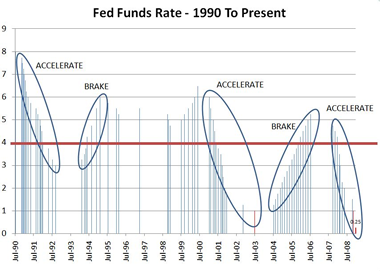How Are We To Measure Global Warming
SEARCH BLOG: GLOBAL WARMING
Why is there so much controversy about global warming? Is the world warming or isn't it? How much more direct can a question be? Then why can't we get agreement on whether it is happening or not?
Well, for one thing, measuring global temperature change is not like measuring the distance between two points on a table. The two dimensional metric of measuring two points distance is insignificant compared with measuring the three dimensional atmosphere and ocean temperatures and heat content.
The first question is what are we measuring? From the very start there is little agreement....
- Surface temperatures versus complete atmospheric temperatures
- Land temperatures versus ocean temperatures
- Ocean surface temperatures versus ocean heat content to 700m.
- Satellite readings
- 6 ft. above ground thermometers [calm, windy, sunny, cloudy, rainy, dry]
- Ocean surface buoys [current conditions/direction]
- Ocean buoys at various depths [circulating versus non-circulating water]
- 1 time per day, 2, 24, continuous readings per day
- randomly or evenly dispersed readings geographically [grid vs. sporadic]
- Daily, monthly, quarterly, annual calibration
- > 0.1°, >0.5°, >1.0°, >3.0°
- Electronic vs. manual readings
- Disagreement with nearby sites
- Time of day for readings
- Artificial heat sources
- Relocation of a site
- Specific adjustment versus general formula
- High temperature/average of high temperatures/record high temperatures
- Low temperatures/average of low temperatures/record low temperatures
- Daily average of maximum/minimum/record daily average
- Average of continuous readings/record average [per period]
- Variance from historical average [variable 30-year period/all recorded history]
- The last 30-years [to establish normal?]
- Since 1880 [why start in a recognized cold period?]
- Since the last ice age [what are the bases for measurement and how can they be made consistent?]
- Geological eras [does trend variability over a century that is less than annual average temperature variability mean anything significant?]
- Maximum/minimum for a day
- Maximum/minimum for a month
- Average monthly temperatures [max/min or continuous?]
- Average annual temperatures [max/min or continuous?]
Once everyone agrees on the answers to all of the above, then we can have a rational discussion about whether the temperature history [as agreed upon] indicates global warming, global cooling, or climate oscillations within an expected variation.
For those who argue that using monthly, statewide, all-time, maximum and minimum records does not meet an acceptable analytical standard, I will only point out the following:
- the data have not been adjusted on the basis of estimated correction factors for specific locations
- the data cover more than a small geographic area and are not as impacted by unusual circumstances as a single site
- the data average roughly a 30-day span for each record and are not as impacted by random day-to-day readings... not entirely seasonal, but not restrictively short
- the data establish the temperature boundaries for large areas/regions versus micro-climate boundaries
A single statewide record could be nothing more than an extreme event, but 113 statewide records in a decade is an extreme decade covering a large area. The fact that those 113 records in the 1930s [about 19% of all records from all years] have stood for 70-80 years is a pretty good indication that the more sporadic incidents of records subsequently have been related to minor climate oscillations... comparatively.I'll stand by my statewide, monthly, all-time temperature records as being as meaningful as any other metric in judging climate change... at least for the U.S. where there have been long-term observations over a large geographic area. I would interpret a 1° trend increase over 130 years from a low starting point as essentially irrelevant... given the absence of a significant concentration of extreme temperature records currently. It is more likely that the trend can be solely attributed to the low starting point and nearly every other change has been variation within the general upper limit defined by the 1930s.
RELATED:
MONDAY, JANUARY 19, 2009Where Is The Global Warming... Extreme Temperature Records Update January 2009








